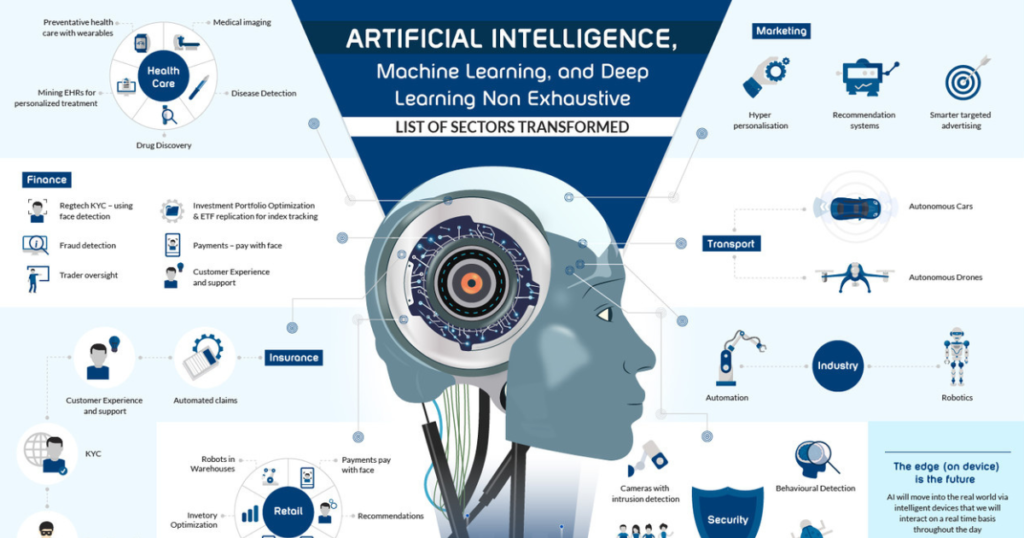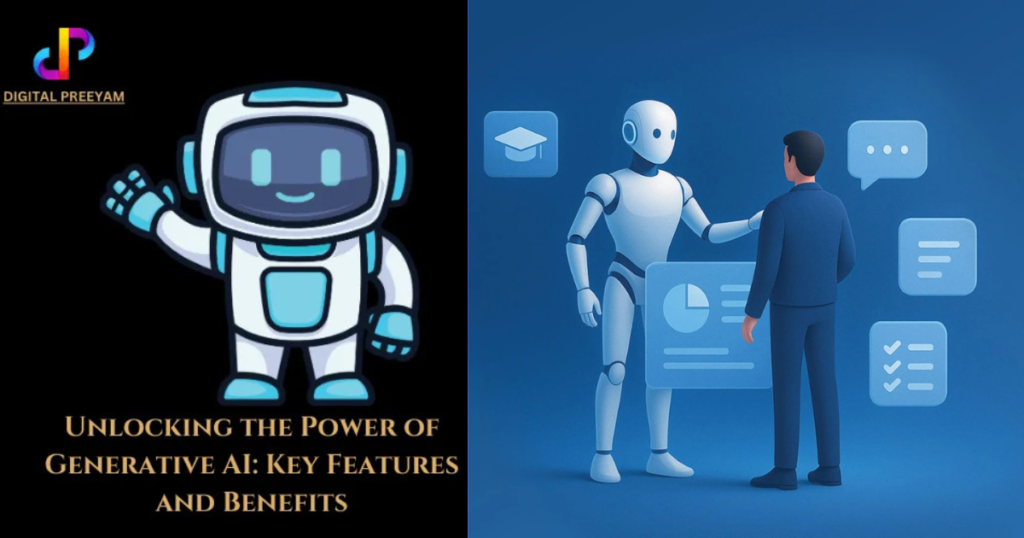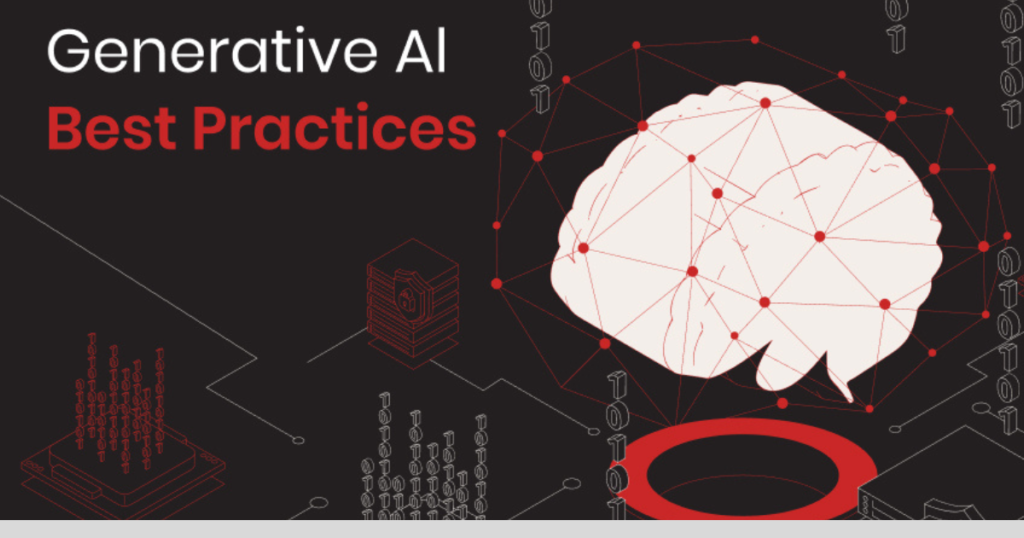
What is generative AI and how does it work

introduction
Generative AI (Gen AI) is smart computer technology .It can make new things like text, pictures, or sounds. It learns by looking at lots of information and finding patterns. Then it uses those patterns to make something new. People use Gen AI tools like Chat GPT to get help or answers.
Businesses use it to write, fix code, and save time. Gen AI also helps train other AI by making fake data..
Generative AI uses smart computer programs that learn like the human brain.
It studies large amounts of data to find patterns and understand what people ask.
Then it creates new content like answers, text, or images.AI has been popular for years, but tools like Chat GPT made it even more famous in 2022.
Now, many people and companies use it to work faster and get more done. A report says about one-third of companies already use generative AI in their work. By 2026, most businesses are expected to start using it in some way.
Generative AI looks at lots of data to make new things like text, pictures, music, or code. It started from simple chatbots and has grown to create content that feels human-made. Tools like Chat GPT can now talk with people, write stories, and answer questions. Today, many industries use Gen AI to save time, solve problems, and be more creative.
Core concepts of Generative AI
Generative AI uses neural networks, which work like a simple version of the human brain.
They have layers that take in data, learn patterns, and create useful output.Each layer helps the AI understand more complex parts of the data.Big models like GPT-3.5 use billions of settings to create smart and clear answers.
What type of Generative AI
There are different types of generative AI, based on what they do or how they are used. Experts have grouped them into five main types. Generators create new content from input, such as turning words into stories or prompts into images. Reimaginators take existing content and change or improve it in creative ways, like editing photos or rewriting text. Synthesizers make fake or simulated data that can help train other AI systems safely and more effectively. Assistants are AI tools that help with tasks like writing, coding, or translating, often using deep knowledge of the topic. Enablers provide the tools, platforms, and computing power needed for AI systems to function properly. Another way to group generative AI is by the kind of content it makes—such as text, images, music, or code
What is the key feature of Generative AI

Generative AI, or Gen AI, is powerful because it can create new and original content like stories, pictures, music, and ideas from simple inputs. It doesn’t just copy—it invents fresh, unique results that often look or sound like real work made by people. One big strength of Gen AI is that it can learn with less data and still give realistic results. It can also do many kinds of tasks—like writing, coding, and answering questions—using the same model. Gen AI works very fast and can handle thousands of jobs at the same time, making it perfect for businesses. It also helps people by doing boring or repetitive creative work, like writing drafts or summaries, so humans can focus on bigger ideas.
Gen AI is great for personalization, too—it can create content that fits each person’s needs, like in ads or emails. It improves customer service by giving fast, helpful replies and also helps developers by writing, checking, and fixing code. It can read complex data, explain it clearly, and help teams make smart choices. Gen AI also works across different formats like text, images, video, and sound, so it can create full projects from just one prompt. Once trained, it adapts quickly to new tasks and doesn’t always need labeled data—it can learn from examples on its own. It gives personalized answers based on each person’s questions and can work with many types of data at once, like drawing a picture from a sentence. And when real data is limited, Gen AI can even make fake data to help train other AI tools
What is the main goal of Generative AI
Generative AI is a smart type of AI that creates new things like text, images, or music. It learns patterns from lots of data to make content that feels human-made and creative .Generative AI is changing how people work by saving time, boosting creativity, and helping with tasks. Many workers now use AI daily—this article will explain its goals, how it works, benefits, challenges, and future.
The main goal of Generative AI is to boost human creativity, automate content generation, and improve personalization by creating original text, images, music, and other forms of data using advanced machine learning models. Below we have discussed these goals in detail:
Generative AI, or Gen AI, is changing how we work, create, and solve problems. It can make text, images, music, and videos that feel human-made, helping writers, artists, and businesses create content faster and easier. For example, it can write blog posts, design pictures from words, make music, or even turn ideas into short videos. Gen AI also saves time by handling boring tasks like writing emails or reports, giving people more time for creative work. It can help with decisions too, by looking at data and giving smart advice. Gen AI is a great tool for innovation—it combines old ideas to create new ones, helps invent products, speeds up science, and lets anyone explore their creativity in art or design. It also offers personalization by adjusting content and apps to each person’s needs, giving better service and a smoother experience. Finally, Gen AI is being used to solve big problems around the world, like fighting climate change, improving healthcare, and making learning more personal and effective..
What is true about Generative AI
Generative AI is a type of AI that creates things like text, pictures, and videos. Popular tools include Chat GPT, Bard, Mid journey, and DALL‑E .It works by guessing what comes next, like the next word or image part. It uses a special system called a language model trained on lots of data. This helps it choose the best answer based on the context.
What is a best practice when using Generative AI

To get the best results from generative AI, companies need to follow smart and careful steps. First, using techniques like RAG (Retrieval-Augmented Generation) helps AI give better answers by using real company data, though it can be tricky with structured information. Adding metadata to your data helps organize it, so the AI can find and use the right details from many sources. It’s also important to keep your data clean, updated, and error-free to help the AI stay accurate and fair.
Employees should be trained to write clear prompts and understand how to use AI tools. Start small by testing AI with a few teams to see what works. Set clear goals for how AI should be used, and always keep people involved to check and improve what AI creates. Have experts from different departments review AI outputs regularly, and update the system based on feedback. Make sure the AI follows rules, avoids bias, and protects data privacy by setting strong policies and involving legal teams. Build a special team to lead AI work and guide others. Most importantly, use AI with care and responsibility—leaders should clearly explain the right and wrong ways to use it. When done right, Gen AI can help your company grow, save time, and work more efficiently.
What is the best AI art Generator
There are many generative AI tools, each with its own strengths depending on what kind of image you want to make. Imagen 3 by Google is best for realistic images with clear text, great for posters and logos. Krea creates high-resolution, detailed, and colorful images, and even lets you animate or upscale them. If you’re making game art or characters, Leonardo AI is perfect, offering many styles and strong customization. Ideogram focuses on adding readable text to images, which is ideal for logos and banners.
Fre epik is great for product mockups and illustrations, though some features need payment. Adobe Firefly is designed for commercial visuals and works well with Photoshop, but still struggles with text. Microsoft Copilot Designer helps make fast and simple social media posts using DALL·E 3, though it offers less style control. Chat GPT can now generate images too, with support for fun styles like Ghibli or retro themes. Decohere makes realistic photos from your prompts and includes helpful features like “magic prompt.” Se Art AI shines in anime and cartoon-style art and offers many models for customization. Finally, Recraft is best for creating icons, vector art, and 3D designs, using simple tools for quick results.
. How does AI art work?
AI art generators may appear magical, but they are actually machine learning.They convert your language into images by learning from millions of picture-and-caption instances.The bulk of tools generate images using either GANs (like StyleGAN) or diffusion models (like DALL·E or Midjourney).Some apps use open-source models, while others hide their technology behind different user interfaces.Consequently, many art tools have the same image-making engines at their heart, even though they may look different.
FAQs
1. How do AI art generators use language cues to produce images?
To comprehend your prompt and produce a corresponding image, they employ machine learning models that have been trained on millions of image-text pairs.
2. What kinds of AI models are employed in the creation of art?
There are two primary categories: GANs (like StyleGAN) and diffusion models (like DALL·E and Midjourney), each of which produces images in a unique manner
3. Is the technology used by all AI art tools different?
Not all the time. While several programs offer various interfaces or additional functionality, they all use the same fundamental models (such as Stable Diffusion).
4. Can complex prompts be understood by AI art generators?
Yes, but the training data for the model determines this. The AI can better comprehend more specific requests when it is given access to larger and more targeted datasets.
Conclusion:
By transforming basic text prompts into breathtaking graphics, AI art generators have revolutionized the process of creating digital artwork. These technologies learn from massive quantities of data to comprehend and illustrate what you say using sophisticated machine learning models like diffusion and GANs
Even though many generators have similar underlying technologies, different model types and training data might affect their characteristics and outputs. These tools are growing more potent, available, and imaginative as AI develops further, enabling art creation quicker, simpler, and more customized than in the past..



